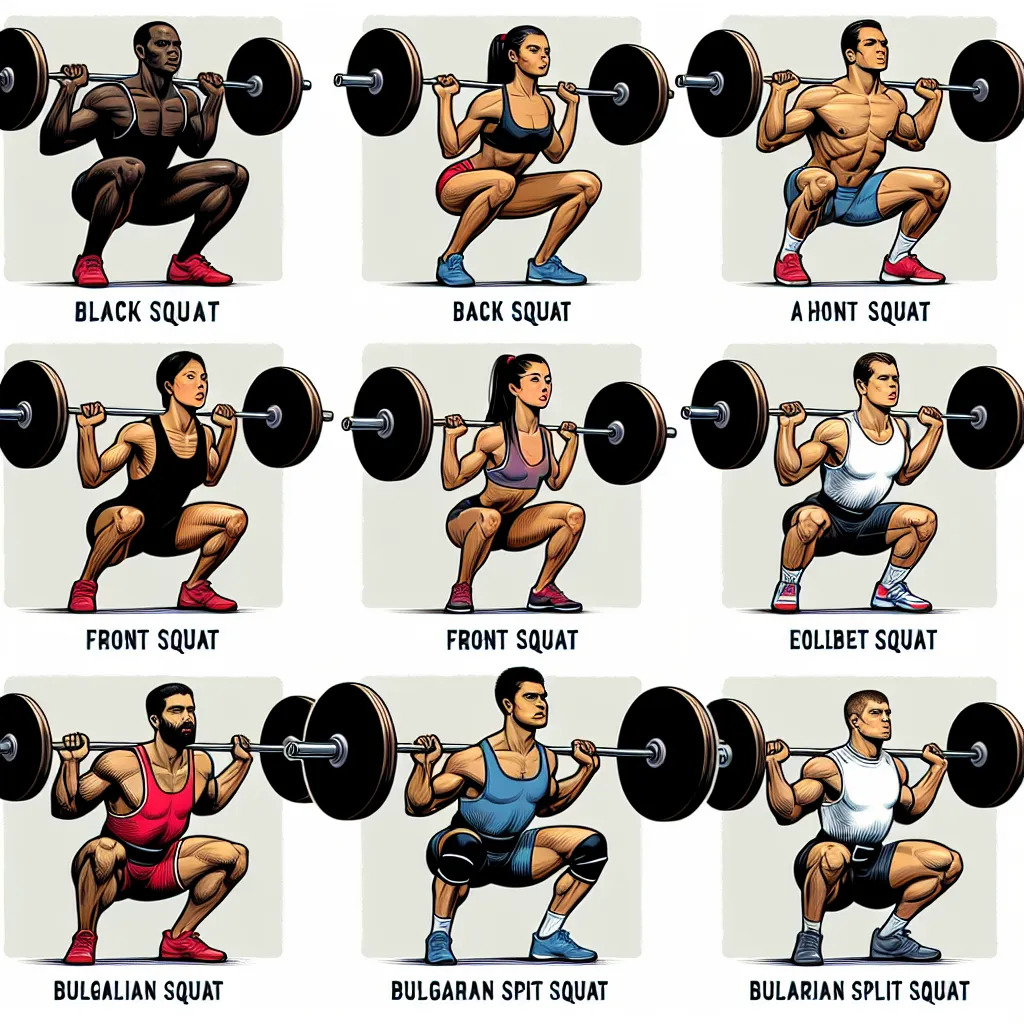Squats are a fundamental exercise in fitness routines, and understanding various squat variations can significantly enrich your English vocabulary, especially for the IELTS exam. Let’s explore the term “squat variations” and how to effectively use it in your language practice.
Nội dung bài viết
Definition and Pronunciation
Squat variations (noun phrase)
/skwɒt veərɪˈeɪʃənz/
Definition: Different types or modifications of the basic squat exercise, targeting various muscle groups and fitness goals.
Context and Usage
Examples in Context
-
The personal trainer introduced several squat variations to challenge her clients’ lower body strength.
Analysis: This sentence demonstrates the use of “squat variations” in a fitness professional context, indicating the purposeful introduction of different squat types. -
For the IELTS Speaking test, I discussed how squat variations can prevent workout monotony and enhance overall fitness.
Analysis: This example shows how you might incorporate the term in an IELTS Speaking response, linking it to broader fitness concepts. -
The fitness magazine featured an article on five essential squat variations for building leg muscle.
Analysis: Here, “squat variations” is used in a media context, highlighting its relevance in fitness literature. -
Athletes often incorporate various squat variations into their training regimens to improve performance.
Analysis: This sentence illustrates the term’s application in professional sports training. -
In my IELTS Writing Task 2 essay, I explained how squat variations contribute to a well-rounded exercise program.
Analysis: This example demonstrates how you might use the term in an IELTS Writing task, showing your ability to discuss fitness topics in depth.
Common Contexts
- Fitness and exercise discussions
- Sports training and athleticism
- Physical therapy and rehabilitation
- Health and wellness articles
- Gym and personal training sessions
IELTS Relevance
In IELTS, “squat variations” may appear in:
- Reading passages about fitness trends or exercise science
- Listening tasks featuring conversations about workout routines
- Speaking Part 2 tasks describing a favorite exercise or fitness activity
- Writing Task 2 essays discussing health and exercise habits
Vocabulary Analysis
Word Structure
- “Squat” (root word): A fundamental lower body exercise
- “Variations” (plural noun): Different forms or types
Synonyms and Related Terms
- Synonyms: Squat modifications, squat types, squat alternatives
- Related terms: Leg exercises, strength training, bodyweight exercises, compound movements

Memorization Techniques
Mind Mapping
Create a mind map with “squat variations” at the center, branching out to different types (e.g., sumo squats, jump squats), benefits (e.g., muscle growth, balance improvement), and equipment used (e.g., barbells, kettlebells).
Visualization Technique
Imagine yourself in a gym, moving through different squat positions. Visualize the muscles working and the varying movements for each type of squat.
Practice Exercises
Application in IELTS-style Tasks
-
Speaking Practice:
Describe your favorite exercise routine, including at least two squat variations. Explain why you prefer these variations and their benefits. -
Writing Task:
Write a paragraph explaining how incorporating squat variations into a workout routine can benefit overall fitness. Use specific examples and link your ideas coherently. -
Vocabulary Extension:
List five adjectives you could use to describe different squat variations (e.g., challenging, effective, versatile). Use each in a sentence related to fitness.
Repetition and Review
Set reminders to use “squat variations” in your English practice regularly. Try to incorporate it into conversations about health and fitness, or when describing your own exercise routines.
Conclusion
Mastering the term “squat variations” not only enriches your fitness vocabulary but also demonstrates a nuanced understanding of exercise terminology, which can be valuable in various sections of the IELTS exam. By practicing with the provided examples and exercises, you’ll be well-prepared to use this term effectively in your test and in real-life conversations about fitness and health.
Remember to actively use “squat variations” in your language practice, perhaps by describing your own workout routine or discussing fitness trends. This active engagement will help cement the term in your vocabulary and improve your overall language skills.
We encourage you to share your experiences with learning and using this term in the comments section below. Have you encountered “squat variations” in your IELTS preparation or in other English-language contexts? How do you plan to incorporate this vocabulary into your study routine?